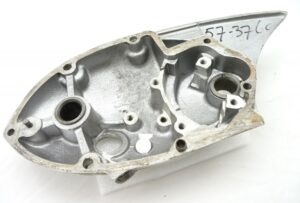The vacuum furnace can realize vacuum quenching and tempering, vacuum annealing, vacuum solution and aging treatment, vacuum sintering, vacuum chemical heat treatment, and vacuum coating. Therefore, the vacuum furnace can realize complex processes that other heat treatment equipment cannot handle.
Vacuum furnaces are classified into vacuum brazing furnaces, vacuum air quenching furnaces, vacuum sintering furnaces, vacuum annealing furnaces, vacuum tempering furnaces, vacuum oil quenching furnaces, vacuum carburizing furnaces, and other types. Next, let’s take a look at the uses of different vacuum furnace types and what are the benefits of using a vacuum furnace for workpiece processing!
1. Purpose of vacuum brazing furnace
A vacuum brazing furnace is mainly used for vacuum brazing of aluminum products such as aluminum alloy heat exchangers, brazing of stainless steel, titanium alloys, carbide, high-temperature alloys, non-ferrous metals and high-speed steel, tool and die steel, bearing steel, stainless steel and other materials Vacuum tempering, aging and annealing treatment of non-ferrous metals, and vacuum brazing of stainless steel heat exchangers, oil coolers, and stainless steel thermos cups.
2. Purpose of vacuum air quenching furnace
Vacuum air quenching furnace is mainly used for high-pressure gas quenching of high-speed steel, tool steel, mold steel, alloy structural steel, and other materials. It can also be used for high-temperature brazing and solid solution of stainless steel materials; sintering and aging treatment of powder materials. At the same time, it also has the function of rapid cooling during annealing and solid solution.
3. Purpose of vacuum sintering furnace
The vacuum sintering furnace uses the principle of medium frequency induction heating under the protective state of hydrogen filling after vacuuming to generate high temperature in the tungsten crucible in the coil, which is transmitted to the work through heat radiation. It is suitable for scientific research and military units to process refractory alloys such as Powder molding and sintering of tungsten, molybdenum, and their alloys. It is divided into two types: horizontal vacuum sintering furnaces and vertical vacuum sintering furnaces. The place where the electric furnace is installed should meet the requirements of vacuum hygiene. The surrounding air should be clean and dry, with good ventilation conditions, and the workplace should not easily raise dust, etc.
Vacuum sintering furnace is mainly used for the sintering process of semiconductor components and power rectifier devices. It can carry out vacuum sintering, gas protection sintering, and conventional sintering. It is a novel process equipment in the series of semiconductor equipment. It has a novel design, easy operation, and compact structure. , multiple processes can be completed on one device. It can also be used for vacuum heat treatment, vacuum brazing, and other processes in other fields.
4. Purpose of vacuum annealing furnace
A vacuum annealing furnace is mainly suitable for stainless steel deep drawing parts such as plumbing equipment and does not oxidize. Vacuum annealing furnace. It has high productivity. After treatment, the surface of the product is bright and non-oxidized. It is widely used in stainless steel bearings, cutting tools, self-tapping and self-drilling, stainless steel screws, and other fields. The vacuum annealing furnace can also be used in a protective atmosphere, with less pollution. The main role of a vacuum is It is a barrier set up for precision parts with high-precision metal components to avoid contact with complex gas components under high-temperature conditions. It can also be used for atmosphere annealing.
5. Purpose of vacuum tempering furnace
Vacuum tempering furnaces are generally applicable when the surface of parts after tempering is bright and free of oxidation. It can be used for high-temperature tempering of tool and die steel, high-temperature alloys, elastic alloys, copper alloys, stress relief, and softening annealing of titanium alloys, copper, and copper alloys. , and also has the function of quick cooling.
6. Purpose of vacuum oil quenching furnace
A vacuum oil quenching furnace is suitable for vacuum heat treatment of mold steel, spring steel, stainless steel, bearing steel, high-temperature alloy steel, etc., and can also have an annealing function. Its main points are a wide range of applicable materials, strong hardenability, low cost, and the quenching oil can be reused. The disadvantages are: that the deformation is relatively large, and the workpiece needs to be cleaned later. Vacuum oil quenching furnaces can be divided into double-chamber furnaces and three-chamber furnaces in terms of structure.
7. Purpose of a vacuum carburizing furnace
The vacuum carburizing furnace can flexibly implement a variety of heat treatment processes, such as vacuum carburizing, vacuum carbonitriding, vacuum carburizing + oil quenching, vacuum carburizing + gas quenching, and vacuum furnace functions. It can also be used for heat treatment of various materials and parts in the industrial field. Such as carburizing and quenching after carburizing of high alloy carburized steels such as 12Cr2NI4A and 12CrNi3A, carburizing and quenching after carburizing of structural steels such as 20CrMnTi, carburizing and quenching after carburizing of stainless steels such as 1Cr13, H13, W6Mo5Cr4V2, etc. Quenching of tool and die steel, quenching and annealing of gear parts, bushing parts, precision bearings, oil pump nozzle mechanical parts, precision mechanical parts, etc.






